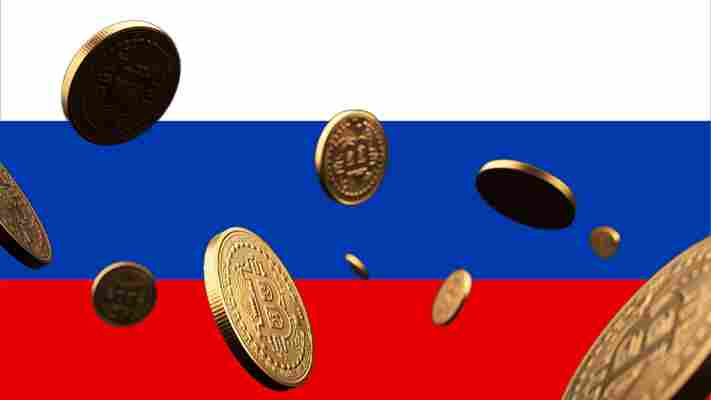Stock splits seem all the rage nowadays. While the ‘generous’ idea behind them is to make ‘too expensive’ stocks more accessible to a wider audience (read: retail investors), speculators are taking advantage by driving up the price ahead of the actual split, potentially leaving newcomers overpaying.

With Apple and Tesla’s most recent stock splits, the phenomenon is getting a bad rep as a way to artificially create shareholder value, not attributed to actual company growth, or shrinkage of the amount of outstanding shares by way of share buybacks from the company itself.
Now, a bunch of fintech services allow for buying fractional shares, making it easier to jump into highly priced stocks. Also, you could get access to high-priced stocks nowadays by buying into ETFs, baskets of different securities, which tend to have accessible share prices. On top of that, there aren’t many hyped up, US listed tech companies left with the urgent necessity to pull off a similar feat. In fact, there are only five tech companies left with a share price above $1000.
| Tech company | Stock price (Sep 1 2020) |
| Amazon | $3499 |
| Booking Holdings | $19128 |
| Alphabet | $1655 |
| MercadoLibre | $1209 |
| Shopify | $1134 |
What’s actually a normal stock price?
Tech companies listed on US stock exchanges have a median share price of $23. If we only look at large-cap tech companies, with a market capitalization of over $10 billion, that figure is $123. That’s close to Apple’s stock price after its latest stock split earlier this week.
When can we expect the next stock split?
None of the above have announced a stock split yet. In fact, Amazon’s last stock split was in September 1999, and it took the company eight years to get its stock price up to similar levels after that. Now that downturn probably didn’t have anything to do with the actual stock split, as it coincided with the dot-com crash. But still, it might have made the company wary to jump into the stock split game again.
Booking’s last stock split was also in the previous century, in 1998 to be precise. Alphabet’s last stock split was a bit more recent, in 2014. Both MercadoLibre and Shopify have never done a stock split before, so they won’t take such a step lightly either.
How common are stock splits?
Stock splits are rare, especially when compared to the 90s for instance. Back then, you could expect between 70 and 180 stock splits per year, whereas in the 2010s and 2020s that figure has dropped to a maximum of 20 per year.
So there you have it. If you’re waiting for the next big tech stock split to make a buck on, don’t necessarily hold your breath, but if you do, know that they don’t change the fundamentals of a company. It’s mainly the speculation around it that’s driving its accompanying moves.
BitTorrent inventor’s ‘green’ Chia cryptocurrency may not be great for the environment
It has been a big year for cryptocurrency. Bitcoin is worth six times what it was 12 months ago, and the joke currency Dogecoin has seen a hundredfold increase in price. A boom in “non-fungible tokens”, or NFTs – tradable tokens based on the same technology as cryptocurrency – is transforming the art market.

With this growth has come renewed scrutiny, with critics attacking Bitcoin in particular as a speculative bubble that uses vast amounts of electricity and produces no real value.
A new cryptocurrency called Chia, which has just begun trading, sets out to remedy these flaws while upholding cryptocurrency’s promise of a secure, decentralized form of payment.
Chia is the brainchild of Bram Cohen , who invented the BitTorrent peer-to-peer filesharing system. He claims it will be more reliable than other cryptocurrencies, and more environmentally friendly too.
What is cryptocurrency?
Unlike traditional currencies such as the dollar or euro, which are issued by central banks and rely on trust in governments, cryptocurrencies rely on a decentralized database called a blockchain, secured by sophisticated cryptographic tools.
The first cryptocurrency was Bitcoin, released in 2009, and today there are at least 5,922 cryptocurrencies available. Bitcoin is still by far the biggest; the total value of all Bitcoin now in existence is some US$1.2 trillion.
Despite this booming popularity, very few retailers accept cryptocurrency as payment.
Governments around the world are also exploring digital currencies. The Bank of England is hiring a dedicated team to explore the possibilities in this area, while the Australian Stock Exchange is reviewing applications for a cryptocurrency-based exchange-traded fund. Germany is one of the frontrunners in embracing crypto, and is heavily investing in blockchain solutions for institutional investment.
How is Chia different from Bitcoin?
Bitcoin and most other cryptocurrencies use a system in which currency is created or “mined” using computers to solve mathematical puzzles. These are known as “proof of work” systems — solving the puzzle is proof that your computer has done a certain amount of work.
Doing this work takes specialized hardware and lots of energy. Bitcoin mining has helped create shortages of graphics processors, and by some estimates it is more energy-intensive than copper mining and uses more electricity than some entire countries.
Chia runs on a system that should use less energy, called “ proof of space and time ”. In this system, users need to show they have reserved a specific amount of hard drive space at a precise time.
So Chia won’t use huge amounts of electricity, and won’t see miners buying up every graphics card in sight. But the requirement for hard drive storage space may lead to other drawbacks.
Hard drive price surge
Even before its official launch, Chia has used more than an exabyte of data storage. That’s the equivalent of about a million of the 1 terabyte hard drives you might find in an average desktop computer.
According to the South China Morning Post , hard drive prices in China have begun to soar as Chia miners stockpile storage. The price of 12-terabyte drives has increased by 59% since Chia was announced in February this year, and most professional-quality hard drives with more than 8 terabytes of capacity are sold out.
Vietnam is also seeing hard drive shortages as a result of China’s Chia craze.


We may well see similar effects in other countries in the not too distant future. At present, Chia lacks the name recognition and celebrity endorsements that have helped the likes of Bitcoin and Dogecoin to soar, but it has a clear cost advantage.
We can expect cryptocurrency miners will be inclined to try Chia, as a cheaper option than established cryptocurrencies. Eventually, hard drive manufacturers may also revise their prices to increase their own revenue.
Time will tell how Chia ends up performing on the market. If it takes off, we can expect a boom in hard drive prices. But on the flipside, it might also mean graphics processor prices come back down.
This article by Mohiuddin Ahmed , Lecturer of Computing & Security, Edith Cowan University , is republished from The Conversation under a Creative Commons license. Read the original article .
Russians are using crypto to evade sanctions — but it’s not just the elite
Fearing Russia’s elite will evade economic sanctions by converting their wealth to cryptocurrency, high-profile US Democratic senator Elizabeth Warren has introduced a bill into US Congress to stymie Russian crypto transactions.

Warren warned a Senate committee hearing:
The bill does not seek to impose a blanket ban on all Russian cryptocurrency transactions. But it would give the US government the authority to ban US companies from processing cryptocurrency transactions connected to sanctioned Russian accounts and to apply secondary sanctions to foreign cryptocurrency exchanges doing business with sanctioned Russian individuals, companies, or government agencies.
But is it even necessary?
Even though the evidence shows that Russian cryptocurrency transactions have been increasing in both number and value in the past month, the scale suggests buyers are ordinary Russians seeking to hold on to their savings as the value of the ruble crashes.
Targeting sanctions
The economic sanctions imposed on Russia for invading Ukraine are naturally hurting the entire Russian economy. Their intended target, though, is to hit Putin and the billionaire oligarchs who support his rule where it hurts most.
A cornerstone of this strategy is stopping these individuals from using or moving their wealth around by freezing the assets they hold overseas and blocking financial transactions.
But the continued operation of cryptocurrency exchanges in Russia, such as Binance, Yobit, and Local Bitcoins, has been worrying US officials for some time. Even before Russia’s latest invasion of Ukraine, the US Treasury Department warned cryptocurrencies could undermine the sanctions already imposed on Russia over its 2014 annexation of Crimea.
Ruble’s falling value
Our first graph below shows why ordinary Russians have good reasons to buy cryptocurrency.
Since the February 24 invasion of Ukraine, the ruble’s value against the US dollar has fallen by as much as 40%, from $US1 being worth 76 rubles to 132 rubles. At the time of publication, $US1 was worth about 109 rubles.
The ruble falls off a cliff
More rubles going into Bitcoin
The next graph shows the value of Bitcoin transactions by Russian accounts in rubles.
Bitcoin is not the only cryptocurrency Russians could buy, but it is by far the most traded and trusted of all cryptocurrency offerings, so is a useful proxy for the market. This data comes from Coin Dance , a leading Bitcoin statistics and services company.
Since the war began on February 24 until the time of publication, spending on Bitcoin using rubles has increased by 260%.
Bitcoin trading volumes by Russian accounts in rubles (weekly)
This is an impressive rise, but less impressive when the devaluation of the ruble is factored in. The weekly value of rubles being converted into Bitcoin was about $US28 million last week, compared with about $US14 million in mid-February. That’s a 100% rise.
In global terms, this is still a tiny percentage of the money going into Bitcoin. According to cryptocurrency data provider Kaiko , each week between $US20 billion to US$40 billion is spent on Bitcoin. So the Bitcoin-ruble trade represents less than 0.14% of the total.
Small transaction size
It is also important to consider the number of accounts and the size of average transactions.
According to Glassnode, another cryptocurrency data service, the number of Russian Bitcoin accounts has increased from 39.9 million to 40.7 million since the February invasion. (The Russian population is about 144 million.)
The daily average size of each Bitcoin-ruble transaction – based on data from the largest exchange in Russia, Binance – has risen to $US580 by mid-February. This compares to the average value of American transactions being $US2,198 at the same time.
The capacity to put large amounts of rubles through crypto exchanges operating in Russia is also heavily constrained by the relatively low liquidity in the Russian crypto trade.
Liquidity refers to the ease with which an asset or security – in this case, Bitcoin – can be converted from or into cash without affecting its market price. When a market has more buyers and sellers, it becomes easier to complete a transaction, and the less impact there is on the exchange rate. With fewer buyers and sellers, it is harder.
A measure of the liquidity of the Russian Bitcoin exchanges is the value of orders submitted by buyers and sellers at any given time. This is about US$200,000, compared with $US22 million for US-based crypto exchanges – a volume 110 times larger.
These statistics suggest anyone wishing to trade large volumes of Bitcoin against the ruble will have difficulties.
Small-time investors
The evidence, therefore, points to most of the uptick in Russian cryptocurrency trading being dominated by small-time investors.
It is possible that Putin and his cronies could be using hundreds or thousands of accounts to perform many small-scale transactions to move their fortunes around.
But it’s more likely their wealth is mostly invested through shell companies in assets in places like Monaco, the British Virgin Islands, Ireland, or even the US district of Delaware .
There is little argument against the strategy of using economic sanctions to combat recalcitrant regimes. Other than direct military intervention, there are few other meaningful weapons available. But a detailed analysis of any proposed sanction beforehand is needed to overestimate its likely effectiveness.
Article by Dr Paul Mazzola , Lecturer Banking and Finance, Faculty of Business and Law, University of Wollongong and Mitchell Goroch , Cryptocurrency Trader and Researcher, University of Wollongong
This article is republished from The Conversation under a Creative Commons license. Read the original article .











